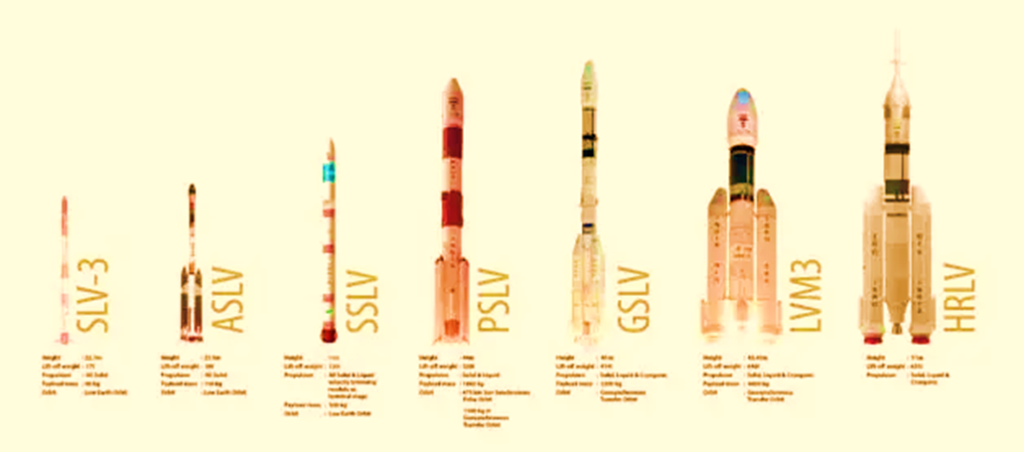SpaceX’s Falcon9 blasted off from Florida’s Cape Canaveral with Indian Space Research Organisation’s (ISRO) GSAT-20 communication satellite. The Indian satellite, which weighs around 4,700 kg, is designed to enhance India’s communication infrastructure, featuring a Ka-band high-throughput communications payload with a mission lifespan of 14 years.
SpaceX Successfully Launches ISRO’s GSAT-N2 Satellite
Why In News
- SpaceX’s Falcon9 blasted off from Florida’s Cape Canaveral with Indian Space Research Organisation’s (ISRO) GSAT-20 communication satellite. The Indian satellite, which weighs around 4,700 kg, is designed to enhance India’s communication infrastructure, featuring a Ka-band high-throughput communications payload with a mission lifespan of 14 years.
GSAT-20 And Its Purpose, Capabilities
- Built by the Indian space agency ISRO, the 4.7ton(4,700kg) GSAT-20(also known as GSAT-N2) is a high-capacity communication satellite that will offer broadband services.
- This is also the first time ISRO has built a satellite that only uses the advanced Ka band frequency – a range of radio frequencies between 27 and 40 gigahertz (GHz), which enables the satellite to have higher bandwidth.
- The communication satellite, which is also known as GSAT-N2, is equipped with 32 user beams, including eight narrow spot beams and 24 wide spot beams, which will be supported by hub stations located throughout India.
- Meant to circle 36,000 km above the earth’s surface, GSAT-20 would be able to cover the entire Indian mainland and also the Andaman & Nicobar, Lakshadweep archipelagos.
- The satellite, once operational, will provide vital services across the country, including internet connectivity for remote areas and in-flight internet services—an area that has recently seen regulatory changes allowing such connectivity in Indian airspace.
- The satellite is fully owned, operated and funded by NewSpace India Limited (NSIL), the commercial arm of the Indian Government-run Space agency ISRO. Presently, NSIL owns and operates 11 communication satellites that are in orbit. GSAT-20 will be the twelfth in the series of NSIL-owned satellites.
- According to NSIL, GSAT-20 is a high-throughput satellite that operates in the Ka-band of the spectrum. The bulk of the 48 Gbps capacity on board the satellite had been secured by Indian service providers. However, the names of these firms have not been revealed.
GSAT-20 Is Heavier Than What Indian Rockets Can Lift
- Most rockets are cargo-carrying vehicles. Each one has its own specifications and lift capability. In the ascending order of how much payload can be delivered to Low-Earth Orbit (approx 500 km above the earth), ISRO’s rockets can be classified thus: SSLV (500kg), PSLV (1750kg), GSLV (6000kg), LVM3 (8000kg).
- There are orbits at higher altitudes than the Low-Earth Orbit (LEO). For placing a craft in higher orbits or transfer orbits, the rocket would have to be more powerful, use efficient propulsion systems and deliver more velocity to the satellite.
- Typically, communication satellites are launched into an initial orbit that is 170km x 36,000 km (also known as Geosynchronous Transfer Orbit or GTO). India’s GSLV and LVM3 rockets are designed and proven to deliver payloads into such highly elliptical (egg-shaped) orbits.
- While the GSLV can deliver around 2250 kg to GTO, the LVM3 can deliver 4000kg to GTO. However, GSAT-20 weighs 4,700kg. Therefore, it is beyond the lifting capacity of India’s operational rockets. This operational limitation is why the Indian government has chosen a foreign rocket.
Why Is This The First Indian Govt Satellite To Fly On Spacex
- For several decades, India has been relying on European Ariane rockets to launch communication satellites that cannot be lifted by Indian rockets. Since the 1980s, the Ariane rockets have launched multiple Indian communication satellites, on a commercial basis.
- Launched in 2023, GSAT-24 was the 25th Indian satellite to be placed in orbit by an Ariane rocket. However, with the retirement of the Ariane 5 rocket in 2023 and the subsequent delay in the operationalization of the Ariane 6 rocket, the only major entity offering such commercial services is Elon Musk’s SpaceX, which is also the firm that has been launching the most number of rockets in recent years, rapidly cementing its position as the largest launch services provider.
SpaceX Falcon 9
- Falcon 9 is a reusable, two-stage rocket designed and manufactured by SpaceX for reliable and safe transport of people and payloads into Earth orbit and beyond. It is the most-flown rocket, it has performed more than 394 launches to date.
- Standard Falcon 9 B-5 rocket, which is 70 metres long and weighs around 549 tonnes, was used during lift-off.
- The rocket is capable of lifting 22800 kg payloads to Low-Earth Orbit. The reusable nature of the rocket ensures that a significant portion of launch cost is reduced when compared to expendable rockets (where the used stages of the rocket are ditched at sea or fall over vast uninhabited tracts of land).
- Notably, Falcon 9 is the smallest among the fleet of SpaceX rockets. The heavier rockets are Falcon Heavy, the second largest rocket in operation and the under-development Starship Heavy, which is the largest rocket ever.
India And Spacex
- The announcement regarding the contract for launching GSAT-20 on SpaceX Falcon 9 was made in January this year. While this is the first time that an Indian Government satellite will fly on a SpaceX rocket, satellites from several Indian private firms have already flown on the Falcon 9.
- As part of Indo-US Space Cooperation and an agreement between the Indian Space Research Organization(ISRO) and American firm Axiom, an Indian astronaut will be flown to the International Space Station(ISS) and back, next year.
- While Axiom is offering astronaut training and facilitating this mission, the launch would be executed by the SpaceX Falcon 9 rocket and the Crew Dragon spacecraft.
- This mission to the ISS would serve as a precursor to India’s homegrown human spaceflight programme and offer real spaceflight experience to an Indian crew member. The only Indian to have flown to space in Wing Commander Rakesh Sharma (Retd), who was part of the Soviet-era Interkosmos programme.




























